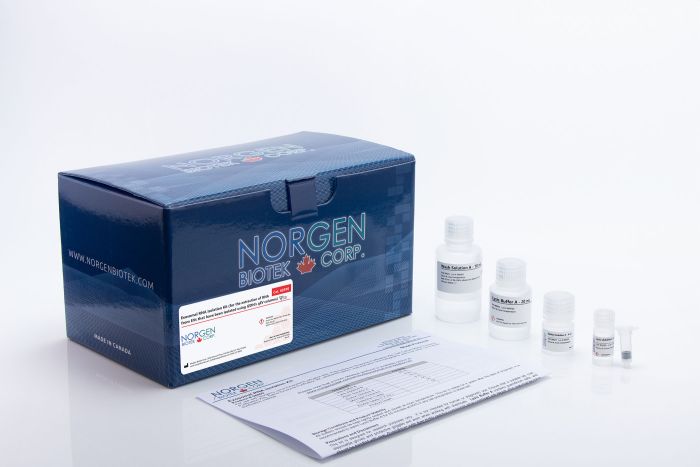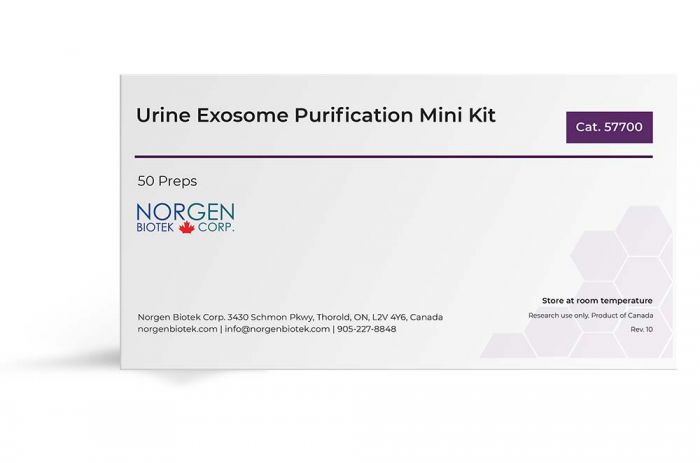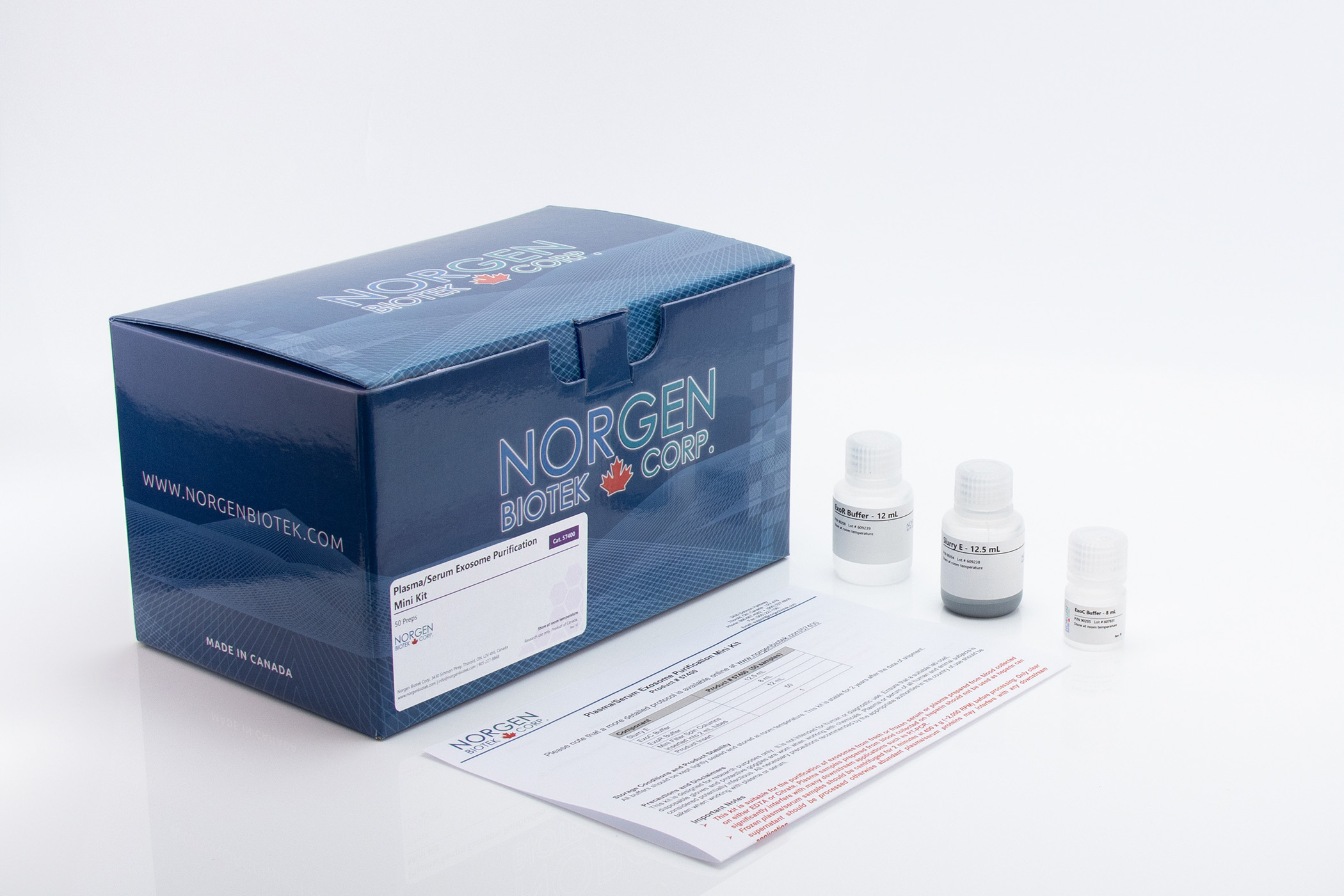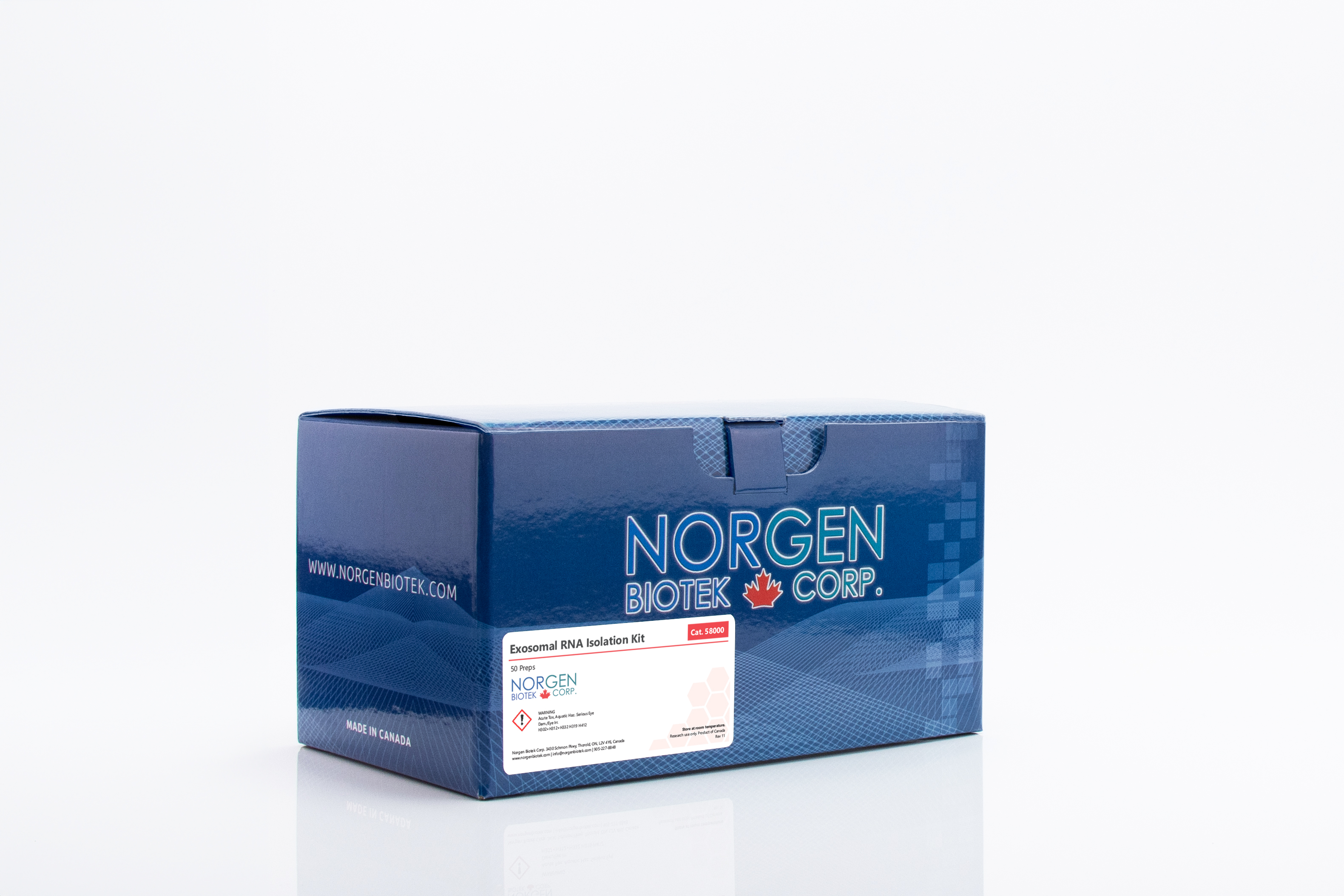Exosomal RNA Isolation Kit (for the extraction of RNA from EVs that have been isolated using IZON’s qEV columns)


Exosomal RNA Isolation Kit (for the extraction of RNA from EVs that have been isolated using IZON’s qEV columns)
Register today to receive an exclusive 15% off* on your first order.
Features and Benefits
- Extract high quality & quantity total RNA including miRNA
- No phenol step required; isolate all RNA in one fraction
- Bind & elute all RNA irrespective of size or GC content, without bias
- Very sensitive & linear down to a few cells without the need for carrier RNA
- Isolate from a wide variety of specimens
- Purified RNA is suitable for a variety of downstream applications, including Small RNA Sequencing. Find out more information on Norgen's NGS services
- Available in a variety of formats to suit your needs
- Purification is based on spin column chromatography that uses Norgen’s resin separation matrix
Norgen's Exosomal RNA Isolation Kit (for the extraction of RNA from EV's that have been isolated using IZON's qEV columns) constitutes an all-in-one system for the isolation of exosomal RNA from exosomes previously isolated using IZON's qEV columns or concentrated using IZON's EV Concentration kit. This kit allows for the isolation of RNA from intact extracellular vesicles (EVs) where the purification is based on spin column chromatography that employs Norgen's proprietary resin.
The kit is designed to isolate all sizes of extracellular vesicle RNA, including microRNA. The kit provides a clear advantage over other available kits in that it does not require any special instrumentation, protein precipitation reagents, extension tubes, phenol/chloroform or protease treatments. Moreover, the kit allows the user to elute into a flexible elution volume ranging from 50 μL to 100 μL. The purified RNA is of the highest integrity, and can be used in a number of downstream applications including real time PR, reverse transcription PCR, Nothern blotting, RNase protection and primer extension, and expression array assays.
Details
Storage Conditions and Product Stability
All buffers should be kept tightly sealed and stored at room temperature (15–25°C). This kit is stable for 2 years after the date of shipment. It is recommended to warm Lysis Buffer A for 20 minutes at 60°C if any salt precipitation is observed.
| Component | Cat. 68910 (50 Preps) |
|---|---|
| Lysis Buffer A | 2 x 30 mL |
| Lysis Additive B | 7 mL |
| Wash Solution A | 38 mL |
| Elution Solution A | 6 mL |
| Mini Spin Columns | 50 |
| Collection Tubes | 50 |
| Elution Tubes (1.7 mL) | 50 |
| Product Insert | 1 |
Documentation
FAQs
Spin Column
A fixed speed centrifuge can be used, however reduced yields may be observed.
All centrifugation steps are performed at room temperature. Centrifugation at 4°C will not adversely affect kit performance.
Adding more or less than the specified volumes may reduce both the quality and quantity of the purified RNA. Eluting your RNA in high volumes will increase the yield but will lower the concentration. Eluting in small volumes will increase the concentration but will lower the overall yield.
Your purified RNA will be contaminated with the Wash Solution A. This may reduce the quality of your purified RNA and will interfere with your downstream applications.
Yes, but it is recommended that the 2nd elution be in a smaller volume (50% of 1st elution)
Exosomes contain very little RNA. This varies from individual to individual based on numerous variables. In order to increase the yield, the amount of urine, plasma or serum input could be increased.
Most of the Exosomal RNA is short RNA fragments with a very low concentration, where the A260/280 ratio tends to decrease with the decrease in the RNA concentration. The A260/280 ratio is normally between 1 – 1.6. This low A260/280 ratio will not affect any downstream application.
If a different Elution Buffer was used other than the one provided in the kit, the buffer should be checked for any components that may interfere with the application. Common components that are known to interfere are high salts (including EDTA), detergents and other denaturants. Check the compatibility of your elution buffer with the intended use.




